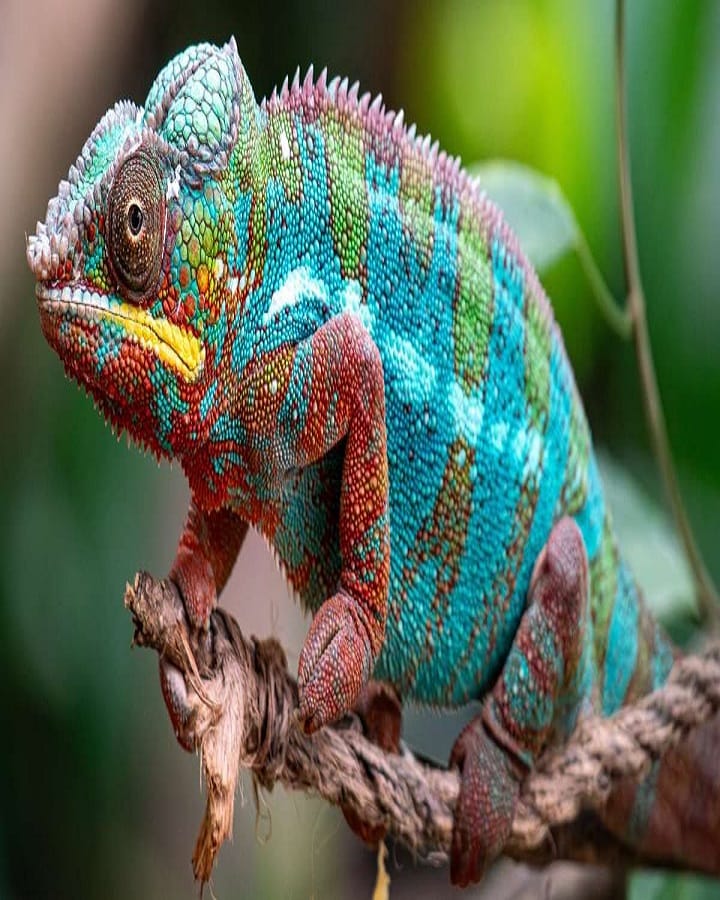
Image Credit – Hema
Have you ever wondered how do chameleons work their magic when it comes to changing colors, moving their eyes independently, and catching prey with lightning-fast tongues? Chameleons are one of nature’s most fascinating reptiles, equipped with a set of unique biological adaptations that make them truly special. From their specialized skin cells to their advanced vision and hunting techniques, every aspect of a chameleon’s body is designed for survival and stealth. In this article, we’ll dive into exactly how these amazing creatures function, revealing the science behind their extraordinary abilities.
How Do Chameleons Work: Nature’s Master of Transformation

1. The Science Behind Chameleon Color Change
When most people think about how do chameleons work, the first thing that comes to mind is their ability to change colors. This isn’t just for camouflage—color change can also indicate mood, temperature regulation, and communication with other chameleons.
- Skin Structure: Chameleons have specialized skin layers containing pigments and guanine crystals in cells called iridophores.
- Light Reflection: By adjusting the spacing between these crystals, chameleons can reflect different wavelengths of light, which changes their skin color.
- Purpose of Color Change:
- Camouflage to hide from predators.
- Social signaling during mating season or territorial disputes.
- Temperature control by turning darker to absorb heat or lighter to reflect it.
2. Independent Eye Movement for All-Around Vision
One of the most mind-boggling features of chameleons is their ability to move each eye in a different direction. This means they can look in two different places at the same time.
- Eye Anatomy: Their eyes are shaped like cones and covered by thick lids with only a small opening for the pupil.
- Survival Advantage: This gives them nearly a 360-degree field of view without moving their head, allowing them to spot predators and prey easily.
- Depth Perception: When focusing on prey, both eyes can lock forward for precise depth calculation before striking.
3. The Lightning-Fast Tongue Mechanism
A key part of how do chameleons work is their hunting method. Chameleons are sit-and-wait predators, relying on their elastic tongues to catch unsuspecting insects.
- Tongue Speed: A chameleon’s tongue can shoot out at speeds up to 13 miles per hour, extending almost twice the length of its body.
- Sticky Tip: The tongue tip has a suction-cup-like pad coated with mucus that helps trap prey.
- Elastic Recoil: Muscles and elastic tissues work together like a spring-loaded system, enabling rapid projection and retraction.
4. Specialized Feet and Tail for Climbing
Chameleons are arboreal reptiles, meaning they live in trees, and their physical features reflect this lifestyle.
- Zygodactyl Feet: Their feet have two toes pointing forward and two pointing backward, giving them a strong grip on branches.
- Prehensile Tail: Their tail acts like a fifth limb, wrapping around branches for balance and support.
- Slow, Steady Movements: This cautious movement helps them avoid detection by predators.
5. Unique Breathing and Body Structure
Chameleons have a laterally compressed body, meaning they are flattened from side to side, which helps them blend in with leaves and branches. They also rely heavily on slow breathing to remain undetected while stalking prey.
Conclusion
From their dazzling color changes to their 360-degree vision and incredible hunting techniques, chameleons are living examples of evolutionary brilliance. Every part of their body works in harmony to ensure survival in the wild. Next time you see one, remember—you’re witnessing a tiny miracle of nature at work.
What fascinates you the most about how chameleons work? Let us know in the comments!
Meta Description
Discover how chameleons work—the science behind their color change, eye movement, hunting skills, and survival adaptations.
Frequently Asked Questions
How do chameleons work when changing their colors?
Chameleons change colors using specialized skin cells called iridophores that reflect light differently depending on cell spacing. This helps in camouflage, communication, and temperature control.
How do chameleons work their eyes independently?
Each eye can move separately due to unique muscles and brain processing. This allows nearly 360-degree vision and better predator and prey detection.
How do chameleons work their tongues so fast?
Chameleons have an elastic recoil mechanism in their tongue muscles, allowing them to shoot their tongues out at extreme speed to capture prey.







